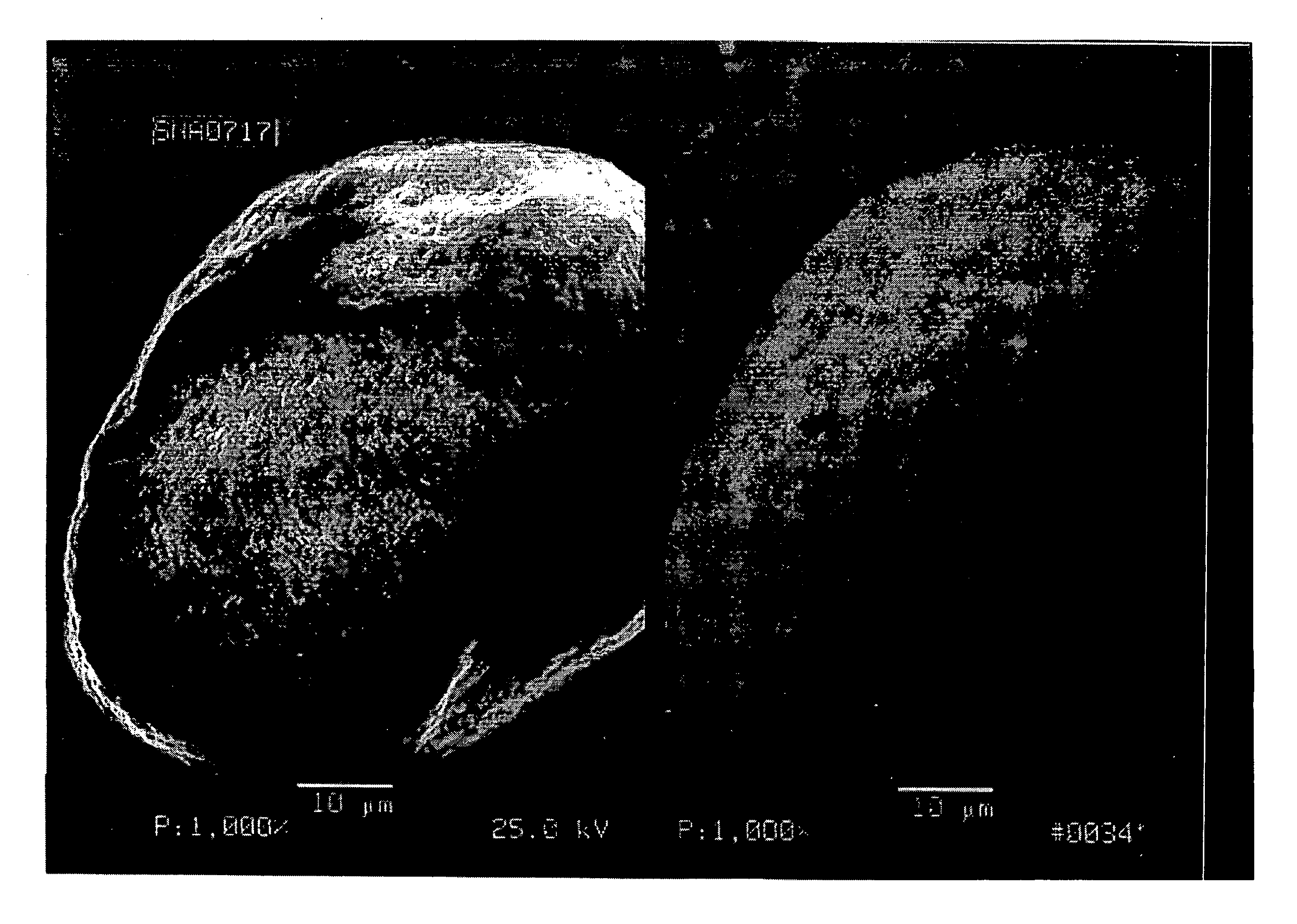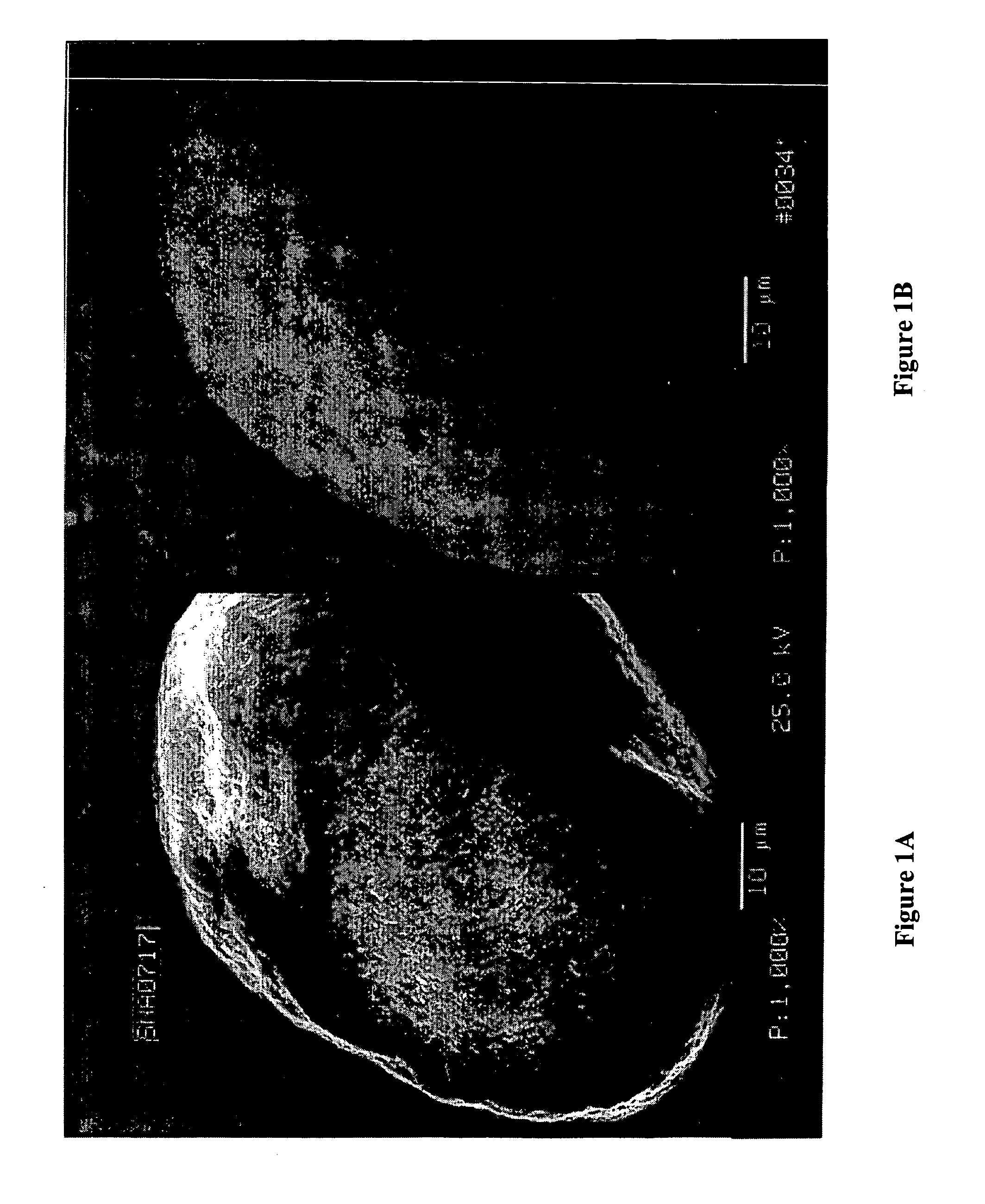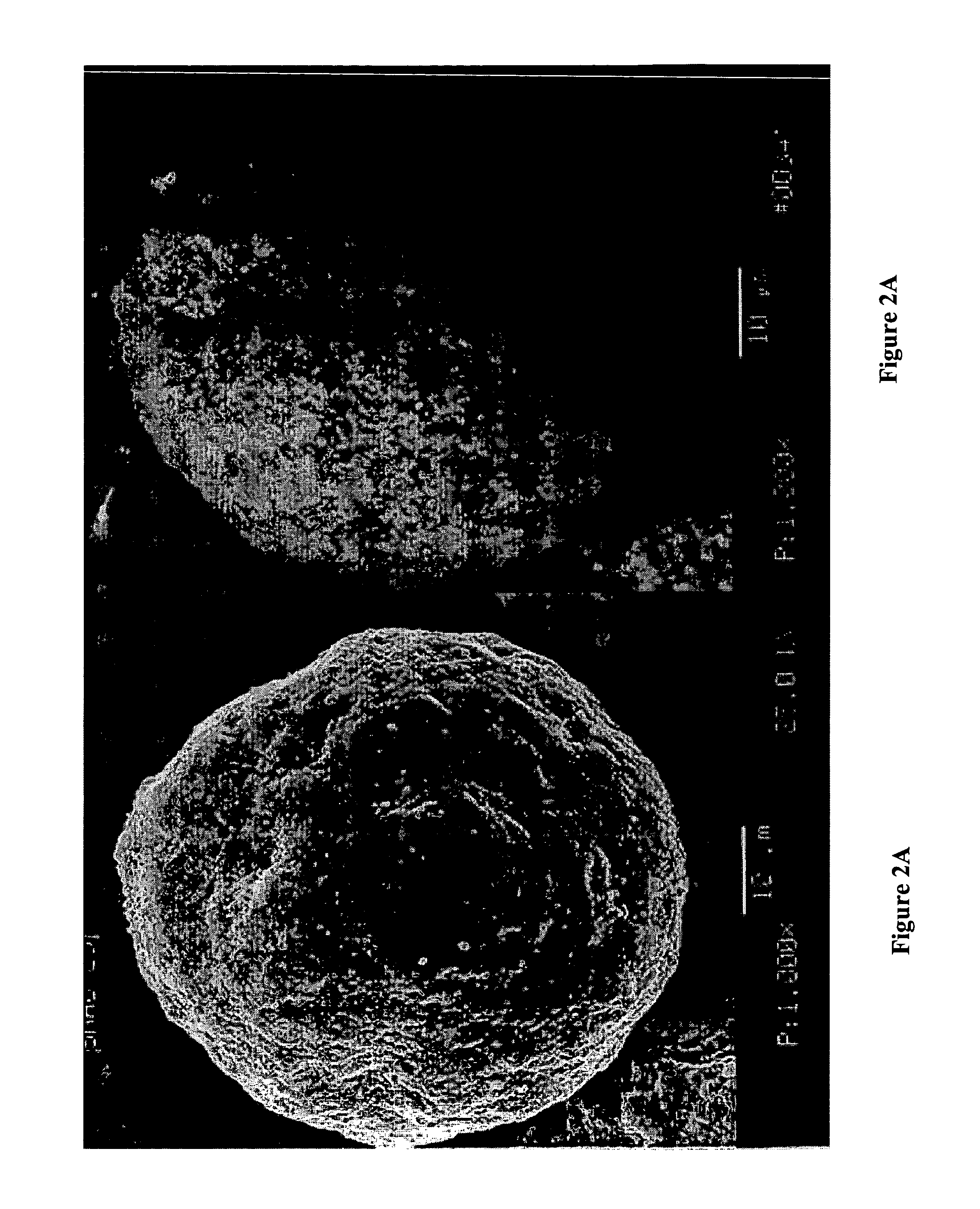High surface area, small crystallite size catalyst for Fischer-Tropsch synthesis
a technology of fischer-tropsch and crystallites, applied in physical/chemical process catalysts, metal/metal-oxide/metal-hydroxide catalysts, other chemical processes, etc., can solve the problems of reducing catalyst efficiency, high turnover (or conversion rate), and large active site number of effective catalysts, and achieves slow crystallite growth upon heating
- Summary
- Abstract
- Description
- Claims
- Application Information
AI Technical Summary
Benefits of technology
Problems solved by technology
Method used
Image
Examples
example 1
[0040]In a preferred embodiment, a cobalt catalyst without a promoter is prepared using a hexaamminecobalt (II) carbonate complex. To a mix tank having a total capacity of about 15 gallons and fitted with a closed coil steam heater and a propeller agitator, about 6 gallons of deionized water is added. The water is agitated at from about 500 rpm to about 1000 rpm by an air powered agitator, and is steam heated until the water reaches a temperature of from about 82° C. to about 85° C. The steam flow rate is measured with a Brooks 3604&09 Hi Pressure Thru-Flow Indicator, and at a temperature of about 168° C. and pressure of about 100 psig, the steam flow is varied from about 10 pounds per hour (PPH) to about 13 PPH. To the mix tank is added 3677.5 g of aluminum oxide support (CONDEA, Puralox SCCa 5 / 150). The steam heating is adjusted to maintain the aluminum oxide solution, or slurry, temperature at from about 82° C. to about 85° C. In a separate mixing vessel, a cobalt ammine carbonat...
example 2
[0041]A cobalt catalyst with a platinum promoter is prepared using a hexaamminecobalt (II) carbonate complex. About one liter of deionized water is added to a stainless steel beaker, having a total capacity of about 4 liters and fitted with a propeller agitator. The water is agitated at a maximum setting using a RZR 1 stirrer (Cafrano Ltd., Wharton, ON, Canada, NOH 2TO), and is heated on a hot plate until the water reaches a temperature of from about 82° C. to about 85° C. To the beaker is added 174.15 g of Puralox® SCCa 5 / 150, and the slurry temperature is maintained at from about 82° C. to about 85° C. In a separate mixing vessel, a metals solution is prepared by combining about 958 mL of an aqueous hexaamminecobalt (II) carbonate solution prepared by reacting cobalt powder with aqueous ammonia in the presence of carbon dioxide to deliver about 5.2 g Co per 100 mL water and about 0.4096 mL of a platinum chloride solution (Colonial Metals, Elkton, Md., 21922). The metals solution i...
example 3
[0042]A cobalt catalyst with a ruthenium promoter is prepared in a similar manner as the platinum promoted catalyst of Example 2, except 200 g of Pluralox® SCCa 5 / 150 is added to 2.4 liters of deionized water; a metals solution is prepared by combining about 1730 mL of a hexaamminecobalt (II) carbonate solution prepared to deliver about 3.5 g Co per 100 mL water and about 37.08 g ruthenium nitrosyl nitrate solution (Noah Technologies, 1.23% Ru, catalog number 90443); and the metals solution is added to the slurry in about 200 mL aliquots at about 30 minute intervals until all the metals solution is added. The solid materials are washed first with about one liter of deionized water in a filter, and then with about two liters of deionized water in a filter press. The solid material is calcined as in Example 2.
PUM
| Property | Measurement | Unit |
|---|---|---|
| pore diameter | aaaaa | aaaaa |
| particle size | aaaaa | aaaaa |
| reduction temperature | aaaaa | aaaaa |
Abstract
Description
Claims
Application Information
 Login to View More
Login to View More - R&D
- Intellectual Property
- Life Sciences
- Materials
- Tech Scout
- Unparalleled Data Quality
- Higher Quality Content
- 60% Fewer Hallucinations
Browse by: Latest US Patents, China's latest patents, Technical Efficacy Thesaurus, Application Domain, Technology Topic, Popular Technical Reports.
© 2025 PatSnap. All rights reserved.Legal|Privacy policy|Modern Slavery Act Transparency Statement|Sitemap|About US| Contact US: help@patsnap.com



